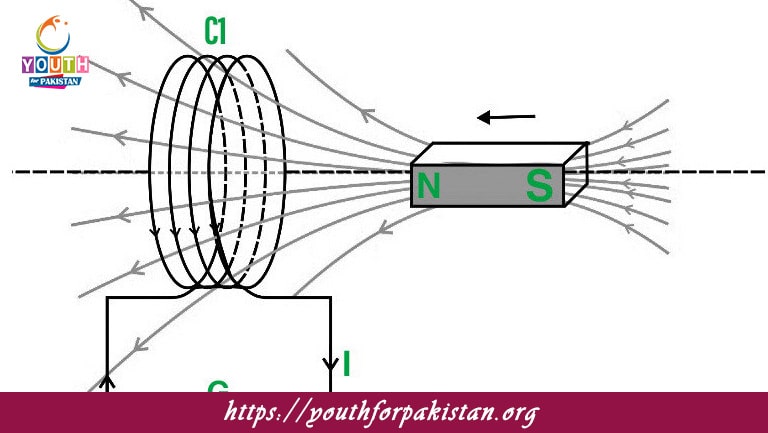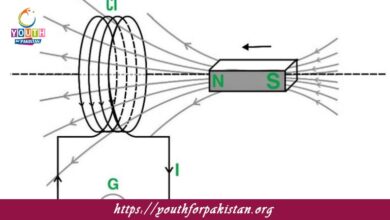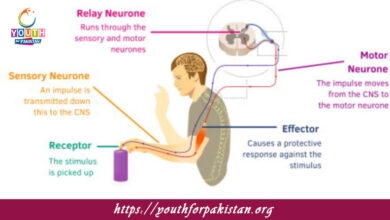Faraday’s Law MDCAT MCQs with Answers

Welcome to the Faraday’s Law MDCAT MCQs with Answers. In this post, we have shared Faraday’s Law Multiple Choice Questions and Answers for PMC MDCAT 2024. Each question in MDCAT Physics offers a chance to enhance your knowledge regarding Faraday’s Law MCQs in this MDCAT Online Test.
Faraday’s Law MDCAT MCQs Test Preparations
Faraday’s First Law of Electromagnetic Induction states that:
a) The magnitude of induced EMF is directly proportional to the rate of change of magnetic flux
b) The direction of induced EMF is determined by Lenz’s Law
c) The total charge induced is equal to the magnetic flux
d) Magnetic flux is independent of time
Faraday’s Second Law of Electromagnetic Induction states that:
a) The magnitude of induced EMF is proportional to the rate of change of magnetic flux
b) The induced EMF depends on the resistance of the coil
c) The magnitude of induced EMF is inversely proportional to the area of the coil
d) The induced EMF is proportional to the time of exposure
The formula for Faraday’s Law of Induction is:
a) E = -dΦ / dt
b) E = Φ × t
c) E = B × A
d) E = I × R
In Faraday’s Law, the negative sign indicates:
a) The direction of the induced EMF
b) The magnitude of the induced EMF
c) The rate of change of magnetic flux
d) The constant magnetic field
Faraday’s Law applies to:
a) Any change in magnetic flux through a closed loop
b) Only static magnetic fields
c) Only AC currents
d) DC circuits only
The induced EMF in a coil is affected by:
a) The number of turns in the coil
b) The material of the wire
c) The temperature of the coil
d) The length of the wire
If the magnetic flux through a coil is constant, the induced EMF will be:
a) Zero
b) Maximum
c) Negative
d) Positive
When the rate of change of magnetic flux increases, the induced EMF:
a) Increases
b) Decreases
c) Remains the same
d) Becomes zero
The magnetic flux (Φ) through a coil is given by:
a) Φ = B × A × cos(θ)
b) Φ = B / A
c) Φ = E × t
d) Φ = dB / dt
Faraday’s Law is used to describe:
a) The generation of EMF through changing magnetic flux
b) The effect of electric fields on magnetic materials
c) The resistance of electrical circuits
d) The conservation of charge
The unit of magnetic flux is:
a) Weber
b) Volt
c) Ampere
d) Tesla
The induced EMF in a loop is greatest when:
a) The magnetic flux changes rapidly
b) The magnetic flux is constant
c) The area of the loop is minimized
d) The magnetic field is perpendicular to the loop
According to Faraday’s Law, the EMF induced in a circuit is:
a) Directly proportional to the rate of change of flux
b) Inversely proportional to the number of turns in the coil
c) Dependent on the resistance of the circuit
d) Unaffected by the area of the coil
The induced EMF in a coil with N turns is given by:
a) E = -N (dΦ / dt)
b) E = N × (dΦ / dt)
c) E = -dΦ × dt
d) E = dΦ / (N × dt)
If the area of the coil is increased, the magnetic flux through the coil will:
a) Increase, assuming the magnetic field remains constant
b) Decrease
c) Remain the same
d) Become zero
The direction of the induced EMF follows:
a) Lenz’s Law
b) Ampere’s Law
c) Ohm’s Law
d) Coulomb’s Law
The magnitude of induced EMF does not depend on:
a) The rate of change of magnetic flux
b) The area of the coil
c) The resistance of the coil
d) The number of turns in the coil
Faraday’s Law of Electromagnetic Induction was first formulated by:
a) Michael Faraday
b) James Clerk Maxwell
c) Joseph Henry
d) Heinrich Hertz
The SI unit of EMF is:
a) Volt
b) Ampere
c) Ohm
d) Watt
The change in magnetic flux can be caused by:
a) Changing the strength of the magnetic field
b) Moving the coil relative to the magnetic field
c) Changing the area of the coil
d) All of the above
The induced EMF in a conductor moving through a magnetic field is given by:
a) E = B × v × l
b) E = B / v
c) E = v / B
d) E = B × l / v
The magnetic flux (Φ) through a surface can be increased by:
a) Increasing the strength of the magnetic field
b) Increasing the area of the surface
c) Increasing the angle between the field and the surface
d) Both a and b
Faraday’s Law can be applied to:
a) Both AC and DC circuits
b) Only DC circuits
c) Only AC circuits
d) Neither AC nor DC circuits
The phenomenon of electromagnetic induction is used in:
a) Electric generators
b) Transformers
c) Induction cooktops
d) All of the above
The rate of change of magnetic flux through a loop can be increased by:
a) Increasing the speed of a magnet relative to the loop
b) Decreasing the strength of the magnetic field
c) Increasing the resistance of the loop
d) Decreasing the number of turns in the loop
The induced EMF in a coil with changing magnetic flux can be described by:
a) Faraday’s Law
b) Ampere’s Law
c) Coulomb’s Law
d) Gauss’s Law
The direction of the induced EMF opposes:
a) The change in magnetic flux
b) The magnetic field
c) The electric current
d) The resistance
The induced EMF in a loop due to a changing magnetic field is:
a) Proportional to the rate of change of the field
b) Inversely proportional to the rate of change of the field
c) Independent of the rate of change of the field
d) Dependent on the temperature of the field
If the magnetic field through a coil is increasing, the induced EMF will:
a) Oppose the increase
b) Enhance the increase
c) Be zero
d) Align with the increase
The magnetic flux through a coil is given by:
a) Φ = B × A
b) Φ = E × t
c) Φ = dB / dt
d) Φ = I × R
The induced EMF in a coil with an increasing magnetic field is:
a) Negative
b) Positive
c) Zero
d) Equal to the magnetic field
The magnitude of induced EMF is affected by:
a) The rate of change of magnetic flux
b) The number of turns in the coil
c) The area of the coil
d) All of the above
The flux linkage in a coil is:
a) The product of the magnetic flux and the number of turns
b) The product of the current and the resistance
c) The rate of change of magnetic flux
d) The product of the area and the magnetic field
Faraday’s Law is crucial for the operation of:
a) Electric generators
b) Batteries
c) Resistors
d) Capacitors
The induced EMF in a moving conductor in a magnetic field is:
a) Directly proportional to the velocity of the conductor
b) Inversely proportional to the velocity of the conductor
c) Independent of the velocity of the conductor
d) Zero
The effectiveness of electromagnetic induction in a transformer depends on:
a) The number of coils in the primary and secondary winding
b) The resistance of the winding
c) The temperature of the transformer
d) The color of the transformer
The induced EMF is zero if:
a) The magnetic flux through the coil does not change
b) The coil is not moving
c) The magnetic field is constant
d) The coil is disconnected
The efficiency of an electric generator is dependent on:
a) The rate of change of magnetic flux
b) The strength of the magnetic field
c) The number of turns in the coil
d) All of the above
The induced EMF is directly related to:
a) The change in magnetic flux
b) The constant magnetic flux
c) The temperature of the conductor
d) The color of the coil
In a practical application of Faraday’s Law, the induced EMF in an electrical generator is maximized by:
a) Increasing the rate of rotation of the coil in the magnetic field
b) Reducing the number of turns in the coil
c) Using a constant magnetic field
d) Decreasing the speed of the coil’s rotation
If you are interested to enhance your knowledge regarding Physics, Chemistry, Computer, and Biology please click on the link of each category, you will be redirected to dedicated website for each category.





